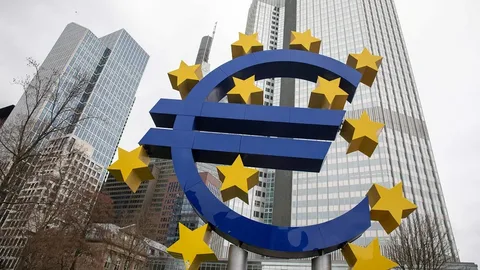Quite unexpectedly, the Euro zone economy received a valuable boost in Q1 2025, having expanded by 0.4%, and thus the preliminary figures from Eurostat. Stronger-than-anticipated growth stands in stark contrast to projections for an increase of only 0.2 percent. The Euro zone economy is still grappling with the tensions brought about by global trade and has now outstripped all forecasts, which has cast a little bit of optimism on the mood in European markets.
After a slow Q4 2024 in which the Euro zone GDP was up only 0.2%, the new data confirm a refreshing opening to 2025. While looming tariffs and volatile energy prices are certainly issues in the short term, the tolerance of the Euro zone economy is a salutary reminder that the region has weathered many disruptions in the past. Let us take a country-focused analysis of the key trends, market implications, and how ECB interest rates and inflation are shaping the path forward for the Euro zone economy.
Read More: Temu Price Crisis Unleashed: Shocking Import Charges Rise
Mixed Country Performance Powers Euro Zone GDP Growth
The Q1 2025 performance of the Euro zone economy was far from uniform. Germany, with the greatest economy in the bloc, registered an increase in Euro-zone GDP of just 0.2%. France lagged well behind at 0.1%. Meanwhile, there were bright spots from southern economies and smaller countries. Increases in Euro-zone GDP of 0.6% were posted by both Spain and Lithuania, with Italy contributing 0.3%. In contrast, Ireland surged at 3.2%, although the figure is quite frequently skewed by multinational activity.
More generally, the discrepancies provided an uplift that pushed the Euro zone economy past expectations. Eurostat analysts attributed this momentum to higher-than-usual services activity and resiliency in household spending in peripheral countries.
Yet economists caution against uneven growth in subsequent quarters. Volatility introduced by the multinationals that operate in Ireland can inflate Euro zone GDP figures, further complicating the decision-making process for the ECB and EU leaders.
ECB Interest Rates and Market Response to Q1 Growth
The responses of financial markets to the positive Euro zone economy data were mixed. The euro fell slightly by 0.08% against the U.S. dollar and gained 0.2% against the British pound. Meanwhile, the yield on Germany’s 10-year bond, which is considered a key benchmark for the Euro zone economy, fell three basis points, indicating caution among investors.
Most of the market’s eyes rest on the ECB interest rates for now. The European Central Bank started the year by cutting the deposit rate to 2.25% in early April from a peak of 4% in the past 2023. This comes after many years of languishing growth, which the ECB hopes to counter by stimulating the Euro zone economy through affordable borrowing costs.
Thus, economists wait with bated breath for June’s policy meeting, as that is when the revised forecasts would have been released. The March was: 0.9% growth in the Euro zone GDP for 2025. It remains to be seen whether recent performance will call for an upward revision.
According to the ECB President, Christine Lagarde, disinflation is in progress, while other external shocks, such as U.S. tariffs, could continue to weigh on the Euro zone economy in the months ahead.
Inflation, Tariffs, and the Road Ahead for the Euro Zone
The continued growth of ECB interest rates, as well as Euro zone inflation, remains a top agenda. The last inflation reading of March put inflation at 2.2%, hovering just lightly above the ECB’s budgeted target of 2 percent. Updated Euro zone inflation data published on this day is expected to influence the next round of interest rate decisions from the ECB heavily.
The ECB also emphasizes that one of the key components of stability in the medium and longer terms is to keep Euro zone inflation close to its goal of about 2% and anything below that might rekindle deflationary fears, while sustained overshooting could set the stage for a reversal of rate cuts.
Simultaneously, another risk emanating from global trade policy is that the EU is currently lined by a 20 per cent tariff on all its exports to the US, which poses one of the biggest challenges to the Euro zone economy. These sectors have crucial contributions to Euro zone GDP, and any breeze on them will flow to the whole supply chain.
At the recent IMF and World Bank meetings, European policymakers warned against the increasing danger of protectionism. Analysts had warned that prolonging trade frictions would cut Eurozone GDP growth bottom line by as much as 0.3 percentage points.
While indeed, the Q1 growth data brings a glimmer of hope, Euro zone economy is exposed more than ever to global uncertainties and weaknesses within its structural fabric.
For More Trending Business News, Follow Us 10xtimes News
Is the Euro Zone Economy Turning a Corner?
The stronger-than-expected growth in Q1 indicates that the Euro zone economy may start 2025 on a firmer note. However, its continuous disputes on trade, volatile inflation path, and dependence on rate policy leave these favorable conditions concerning the sustenance of this momentum uncertain.
So far, resilience shouldn’t provide grounds to be complacent. Policymakers must mix and match ECB interest rate decisions, watch Euro zone inflation, and prepare for trade-related jeopardies. Meantime, the markets should look forward to Eurostat’s revised Q2 data to decide whether this uptick is transient or the commencement of a longer-lasting recovery.
For now, the Euro zone economy has provided a glimmer of hope in an increasingly pessimistic world. Whether this momentum will translate into wider and more inclusive growth across the entire bloc in the coming quarters will be the test.






